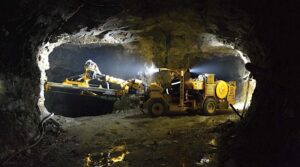
Mining operations, especially in open-pit environments, are challenging when it comes to maintaining reliable wireless communication. Large, rugged landscapes, heavy equipment, and harsh conditions can cause interference, signal blockages, and signal reflections, making it difficult for wireless networks to perform optimally. However, reliable communication is essential for safety, efficiency, and effective automation in mining. This article explores the main challenges of wireless communication in mining, highlights solutions to mitigate signal issues, and discusses the role of repeaters and signal boosters in ensuring consistent connectivity across vast mining sites.

Open-pit mining sites are often spread across rugged landscapes with varying elevations, which can block or disrupt wireless signals. The high walls of open-pit mines and uneven ground create physical barriers, causing signals to attenuate or weaken over distance. Additionally, large mining equipment and buildings can obstruct signals, leading to shadowed areas with little or no connectivity.
Wireless signals rely on line-of-sight (LOS) transmission, which can be compromised by the steep, irregular terrain of a mine site. This limited LOS capability in hilly or uneven areas makes it challenging to maintain stable communication links between devices or from equipment to central control rooms.
Open-pit mines can cover vast areas, with some sites spanning several kilometers. Wireless networks struggle to provide strong, stable coverage across such large distances, as signal strength naturally diminishes with range. Even high-power antennas may not be able to maintain reliable connections over the entire site, which can cause dropouts and reduce the effectiveness of automated and safety systems.
In addition to diminishing signal strength, longer distances introduce latency, impacting the real-time communication needed for operations such as equipment monitoring, location tracking, and safety alerts.
Mining sites are filled with large metal structures, such as crushers, conveyors, and haul trucks, which can create significant signal interference. Metal surfaces reflect and scatter wireless signals, leading to multipath interference, where signals bounce off objects and arrive at the receiver at different times. This can distort the signal or lead to ghosting effects, where multiple reflected signals interfere with the original signal, reducing communication quality and increasing data transmission errors.
Despite these challenges, several solutions can help overcome signal issues in mining environments:
The right antenna choice and placement can help reduce signal interference and enhance coverage. For instance:
These antennas focus the signal in a specific direction, reducing interference by limiting coverage to necessary areas. Directional antennas are ideal for point-to-point links across long distances in the mine.
Useful for broad coverage, omnidirectional antennas are typically placed at high elevations or on towers, ensuring a wide coverage area without focusing on a single direction. They’re suitable for central points like control centers or areas where vehicles and personnel are frequently on the move.
Proper placement of antennas—at elevated positions or in areas with minimal obstruction—can help maintain LOS and provide stronger signals across the site. Additionally, using a mix of high-gain antennas for longer ranges and low-gain antennas for close-range, high-density coverage can ensure optimal signal quality and strength across diverse mine areas.
Mesh networks, where multiple nodes (or access points) connect and act as relays, are highly effective for large, open environments like mining sites. Each node communicates with others, forming a web-like structure that allows signals to reach remote areas by “hopping” from node to node. Mesh networks ensure network redundancy and resiliency, as communication can continue even if one node goes down, with data rerouted through other nodes.
The flexibility of mesh networks makes them ideal for mining because they can adapt to the layout of the site, work around obstacles, and expand coverage to areas that would otherwise be challenging to reach.
One way to mitigate multipath interference in mining sites is to use antennas that are non-colocated and installed with spatial diversity and polarization diversity in mind. Spatial and polarization diverse antenna installation reduces signal distortion by allowing antennas to pick up signals regardless of orientation. This adaptability is particularly useful in environments where signal reflections off large metal structures are unavoidable.
Additionally, using techniques such as Frequency Diversity—where different channels are used to transmit data—can help reduce interference by enabling the system to switch to a clearer channel when interference is detected. Advanced receivers equipped with multipath rejection technology can also distinguish and ignore reflected signals, improving communication quality.
By combining these solutions—strategic antenna placement, mesh networks, multipath interference mitigation, and the use of repeaters and boosters—open-pit mines can achieve a reliable communication network that supports safe, efficient operations. Here’s a potential scenario for network setup in a mining site:
Wireless communication in open-pit mining faces challenges from rugged terrain, long distances, and interference. However, by deploying solutions like directional antennas and mesh networks, mining operators can overcome these obstacles, creating a network that ensures the safety and efficiency of their operations. Reliable wireless communication not only enables real-time tracking and equipment monitoring but also supports automated systems that are increasingly essential in modern mining. With a well-designed communication infrastructure, mining sites can maintain seamless connectivity even in the most challenging conditions, maximizing both productivity and safety.


